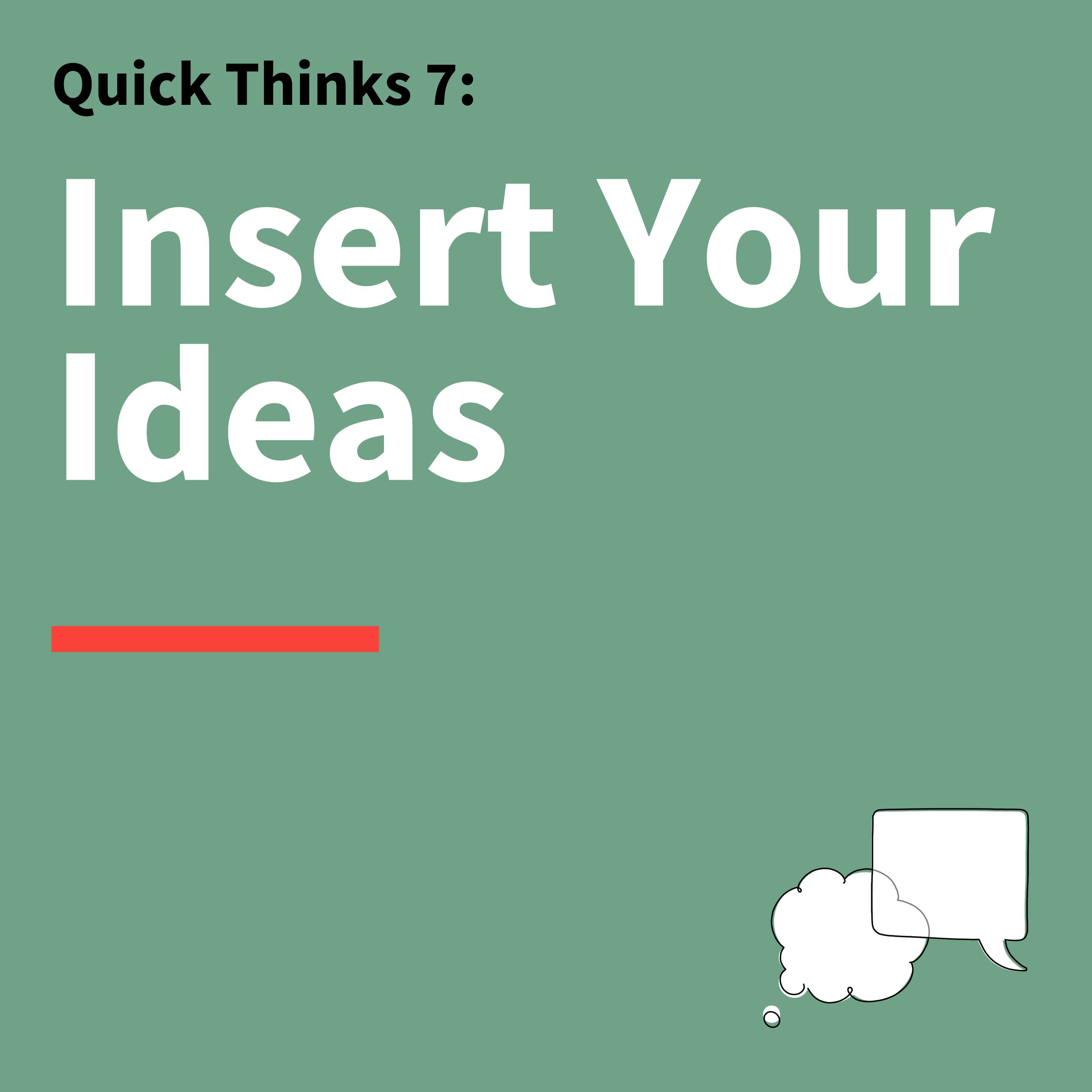7. Quick Thinks: Use This Framework to Speak up in Virtual Meetings

Structuring your comments during a meeting or presentation.
We've all been in the situation where you have something important to contribute to a meeting and you don't know how to insert your thoughts. On this Quick Thinks episode of Think Fast, Talk Smart, podcast host Matt Abrahams offers the three ways to insert your ideas, either by paraphrasing, asking a question, or stating an emotion. He also outlines the "What, So What, Now What" framework and explains how to use this structure to communicate your ideas more effectively.
Connect:
- Premium Signup >>>> Think Fast Talk Smart Premium
- Email Questions & Feedback >>> hello@fastersmarter.io
- Episode Transcripts >>> Think Fast Talk Smart Website
- Newsletter Signup + English Language Learning >>> FasterSmarter.io
- Think Fast Talk Smart >>> LinkedIn, Instagram, YouTube
- Matt Abrahams >>> LinkedIn
********
Become a Faster Smarter Supporter by joining TFTS Premium.
Take advantage of our Sponsor offer from Superhuman
Matt Abrahams: We’ve all been in the situation where you have something important to contribute to a meeting or a presentation and you just don’t know how to insert your thoughts. How do I get my idea out there? And once I do, how do I make it clear and concise?
Today, I will explore specific techniques and tips you can use to be more effective when you need to contribute your ideas in a presentation or a meeting. My name is Matt Abrahams and I teach Strategic Communication at Stanford Graduate School of Business and welcome to a Quick Thinks episode of Think Fast, Talk Smart, the podcast.
Based on the work I have done as a lecturer at Stanford GSB as well as in my consulting practice, there are some specific techniques and tools you can use to insert your ideas in a conversation, a meeting, or even a presentation.
The three best tools that I am aware of are to start with a paraphrase. When somebody is speaking and you want to contribute, you can simply interject a paraphrase. Capture something that they’ve said, it doesn’t have to be a grand paraphrase where you say “so what you’re saying is…” You can just jump on a particular topic, like “Pricing!” Paraphrasing is a polite way to get your point into a presentation or into a meeting.
Another tool is to simply ask a question, so as somebody is speaking you might say, “I have a question about that point.” And that question can be one where it’s presented in a polite, concerned way, or perhaps in a more direct way. So tone matters.
The final way is to simple start with an emotion, “That concerns me” or “I’m excited by.” That emotion gives you permission to then follow up. By paraphrasing, asking a question, or stating an emotion, you can get the floor in an in-person or virtual communication situation.
Now once you have that floor, you have to contribute. We know from our own personal experience that if we are unstructured, meandering and wandering, people aren’t going to take away what we want them to. We must be clear and concise. The way we become clear and concise is by using some kind of message design or structure. And there are many, many that exist. Structure gives us a place to start, it gives us a place to end, it helps us connect our ideas together. My favorite structure for making contributions in meetings, conversations, and presentations is simply three questions: What, so what, now what. This gives you the guide, the map if you will, for what it is you need to say. You start with the what, “What is it you’re talking about,” It could be a process, a product, a point of view.
The So What is “Why is it important” to the people you’re speaking to, perhaps to the company, or even society at large.
And then the Now What is what you want to come next, it could be action items, a follow-up meeting, a demonstration, but it is the action that follows. What, So What, Now What, is a super powerful structure that upon practicing and becoming comfortable with it can really help you construct your messages so that they are packaged well for your audience to understand. I encourage you to take these tools for inserting your ideas as well as the notion of message design through structure to help you be more effective in your communication.